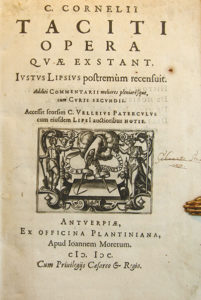If you didn’t get enough from last week’s introduction to the book of Romans, you might want to check out this post.
Last week we looked at who Paul said Jesus was. Prior to his conversion, Paul would have said that Jesus was a blasphemer that broke the Jewish law and deserved what he got. On top of that, all of his followers deserved to be punished for heresy, and Paul was eager to execute their punishment.
But, was we know, Paul was confronted on the Damascus road, where Jesus appeared to him in a show of power, temporarily blinding Paul, but also convincing him that Jesus was the Christ.
Then in Romans we find Paul declaring Jesus to be the Messiah who died and rose again.
“…Concerning His Son, who was born a descendant of David according to the flesh, who was declared the Son of God with power by the resurrection from the dead, according to the Spirit of holiness, Jesus Christ our Lord.” (Romans 1:3-4)
Although I believe the New Testament documents can be proven to be accurate historical sources, it’s helpful to look at what non-Christian historical sources say about who Jesus is, to see if they can corroborate at all the story of Jesus presented in the New Testament.
Specifically, we want to look at other historical sources that were produced around the same time as the New Testament; those sources that would have been close enough in time to be aware of eyewitnesses to these accounts.
Someone might raise the objection that Jesus never existed and that the New Testament is all myth and fable. But is this really a position that considers all the historical evidence?
F.F. Bruce, professor of Biblical criticism at the University of Manchester and author of “The New Testament Documents: Are They Reliable,” writes:
“Some writers may toy with the fancy of a ‘Christ-myth,’ but they do not do so on the ground of historical evidence. The history of Christ is as axiomatic for an unbiased historian as the historicity of Julius Caesar. It is not historians who propagate the ‘Christ-myth’ theories.”
The two best historical references come from two different historians – Cornelius Tacitus and Flavius Josephus.
Historical Confirmation from Josephus
Josephus, a Jewish historian writing around 94 AD writes:
“At this time there was a wise man who was called Jesus. And his conduct was good, and was known to be virtuous. And many people from among the Jews and and the other nations became his disciples. Pilate condemned him to be crucified and to die. And those who had become his disciples did not abandon his discipleship. They reported that that he had appeared to them three days after his crucifixion and that he was alive; accordingly, he was perhaps the Messiah concerning whom the prophets have recounted wonders.”

That comes from Book 18, Chapter 3 in Antiquities, Josephus’ primary work on the history of the world from a Jewish perspective. The quotation that exists today in this work, called the Testimonium Flavanium, is actually much more flattering towards Jesus. However, there is considerable debate as to what portions of this quotation are authentic (provided that these statements are too positive ‘to be made by a Jewish historian, and that a Christian source must have massaged Josephus’ statements later). Whatever the case, most historians agree to an original nexus of Josephus’ statement similar to what I have provided above, which is found in the Arabic text of Josephus work.
Historical Confirmation from Cornelius Tacitus
Cornelius Tacitus also corroborates the existence of Jesus. In Tacitus’ work known as Annals, he comments on the reign of Nero, showing how Nero blamed the great fire of Rome on the Christians. This was written about 116 AD:
“But not all the relief that could come from man, not all the bounties that the prince could bestow, nor all the atonements which could be presented to the gods, availed to relieve Nero from the infamy of being believed to have ordered the conflagration, the fire of Rome. Hence to suppress the rumor, he falsely charged with the guilt, and punished with the utmost exquisite tortures, the persons commonly called Christians, who were hated for their enormities. Christus, the founder of the name, was put to death by Pontius Pilate, procurator of Judea in the reign of Tiberius: but the pernicious superstition, repressed for a time broke out again, not only through Judea, where the mischief originated, but through the city of Rome also.

Conclusion
So, what we have are two solid historical sources that corroborate (1) Jesus’ existence, (2) the time of his existence, (3) his execution under Pontius Pilate during the reign of Tiberius, (4) the claim of his resurrection, (5) and that he amassed a considerable following which began in Judea. From other references in Josephus’ works, we can also find corroboration that he was (6) preceded by John the Baptist, and that (7) he had a brother named James.
These historical works confirm some of the most important historical facts we find about Jesus in the New Testament! This is just one reason why I trust the New Testament as a historical source.
(All scripture references from The New American Standard Bible, © 1995, The Lockman Foundation. All historical quotes from my 1977 version of Evidence that Demands a Verdict by Josh McDowell of McDowell Ministries. You can easily get an online version of Josephus or Tacitus works online.)

